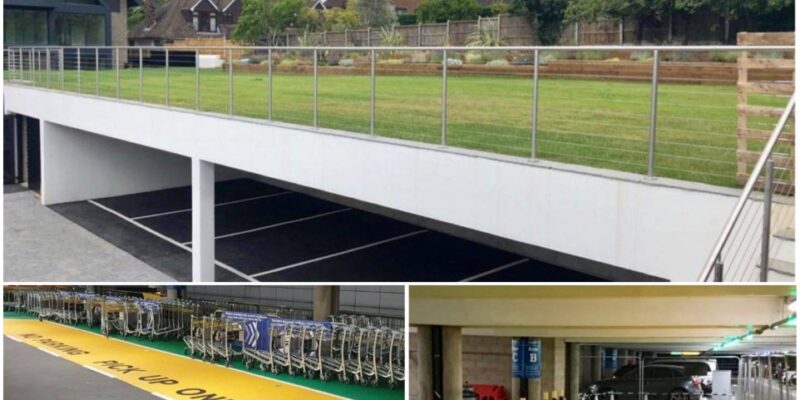Nawierzchnie żywiczne posadzek garaży i parkingów – o wymaganiach … i zarysowaniach
Zapewnienie trwałości parkingów istotnym zadaniem. Dobrze zaprojektowana konstrukcja żelbetowa, zgodnie z wymaganiami Eurocodu 2 (EN 1992), jak i sam beton (zgodnie z PN-EN 206-1) jest w stanie spełnić wymagania dotyczące granicznych stanów nośności. Jednak stany graniczne użytkowania to osobne zagadnienie. Zależnie od rodzaju parkingu, beton na powierzchniach poziomych powinien spełniać najwyższe wymagania dotyczące odporności na chlorki, karbonatyzację oraz korozję mrozową (w przypadku parkingów nieogrzewanych i zewnętrznych). W celu zwiększenia trwałości betonu stosuje się różnego rodzaju systemy ochrony powierzchniowej. Dotyczy to przede wszystkim posadzek. Wykonywanie płyt betonowych wiąże się z przepisami dotyczącymi żelbetu, natomiast posadzki przemysłowe nie są głównym tematem żadnej normy. Pewne wymagania i analogie można znaleźć w normie PN-EN 1504-2.
W opracowaniu zabrane i przedyskutowane zostały wymagania stawiane posadzkom żywicznym parkingów podziemnych. Podano także kilka przykładów usterek i wad nawierzchni.
Ensuring the durability of car parks is an important task. A well-designed reinforced concrete structure, in accordance with the requirements of Eurocode 2 (EN 1992), as well as the concrete itself (in accordance with EN 206-1) is able to fulfil the requirements for ultimate limit states. However, service limit states are a separate issue. Depending on the type of car park, the concrete on the horizontal surfaces should meet the highest requirements for resistance to chlorides, carbonation and frost corrosion (for unheated and outdoor car parks). Various types of surface protection systems are used to increase the durability of concrete. This applies in particular to flooring. The construction of concrete slabs is related to the regulations for reinforced concrete, whereas industrial floors are not the focus of any standard. Some requirements and analogies can be found in EN 1504-2.
In this study, the requirements for resin floors of underground car parks are taken up and discussed.
The case of cracks and other defects in the surface of an example car park are also shown.







